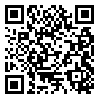Volume 23, Issue 84 (winter 2019)
__Judicial Law Views __2012__, 23(__59__): __224196 |
Back to browse issues page
Download citation:
BibTeX | RIS | EndNote | Medlars | ProCite | Reference Manager | RefWorks
Send citation to:



BibTeX | RIS | EndNote | Medlars | ProCite | Reference Manager | RefWorks
Send citation to:
Montazerqaem M. The Reflection of the Knowledge and Culture Contemporary to Islam's Lawgiver in Its Narrations about atonement. دیدگاههای حقوقی 2019; 23 (84) :165-196
URL: http://jlviews2.ujsas.ac.ir/article-1-1025-en.html
URL: http://jlviews2.ujsas.ac.ir/article-1-1025-en.html
, mahdiqaem@yahoo.com
Abstract: (2652 Views)
Certain crimes have been committed at the time of the Imams, and people have asked them of the atonement verdict. In some cases, the narrators have asked them of an assumed crime. None of these crimes have happened in a void, or in the mind of an empty minded narrator. They are all derived from the special circumstances of that period. So, careful examination of the crimes described in narrations about their atonement brings us a better understanding of the following: What those people knew of human body, the kind of instruments which were used to measure the severity of a crime, common instruments by which crimes were committed, the kind of crimes which were either committed or were imaginable for the narrators in that period, and finally, common properties which were regarded as valuable generally or in special regions.
These are all reflected in the narrations accounting for different atonements. It is, therefore, important to pay attention to these period characteristics mentioned in the narrations (regarding anatomy, criminology, and the properties assigned as atonement) in order to derive religious laws on atonements for crimes committed today. A Faqih (Islamic Jurist) cannot disregard the special implications of those times which possibly formed a part of the subject of the verdict. The knowledge and culture of that time could –at least– in some cases restrict the instructions of the Imams regarding atonement to their specific era. It is impossible to derive the “rulings on atonements” from the “Islamic narrations” without getting to know about the cultural background in which they were issued and without comparing them to the cultural backgrounds of the time when these rulings are being derived. An updated derivation of rulings on atonements requires deriving these laws from the four major sources in such a way that “the anatomy, instruments used to measure the severity of the crime, common instruments by which crimes are being committed, types of crimes, and suitable properties to be paid as atonement” are more compatible with the time of deriving these laws.
These are all reflected in the narrations accounting for different atonements. It is, therefore, important to pay attention to these period characteristics mentioned in the narrations (regarding anatomy, criminology, and the properties assigned as atonement) in order to derive religious laws on atonements for crimes committed today. A Faqih (Islamic Jurist) cannot disregard the special implications of those times which possibly formed a part of the subject of the verdict. The knowledge and culture of that time could –at least– in some cases restrict the instructions of the Imams regarding atonement to their specific era. It is impossible to derive the “rulings on atonements” from the “Islamic narrations” without getting to know about the cultural background in which they were issued and without comparing them to the cultural backgrounds of the time when these rulings are being derived. An updated derivation of rulings on atonements requires deriving these laws from the four major sources in such a way that “the anatomy, instruments used to measure the severity of the crime, common instruments by which crimes are being committed, types of crimes, and suitable properties to be paid as atonement” are more compatible with the time of deriving these laws.
Type of Study: Research |
Subject:
Criminal Law
Received: 2017/06/13 | Revised: 2019/07/01 | Accepted: 2018/12/06 | Published: 2019/06/24 | ePublished: 2019/06/24
Received: 2017/06/13 | Revised: 2019/07/01 | Accepted: 2018/12/06 | Published: 2019/06/24 | ePublished: 2019/06/24
Send email to the article author
| Rights and permissions | |
 |
This work is licensed under a Creative Commons Attribution-NonCommercial 4.0 International License. |

